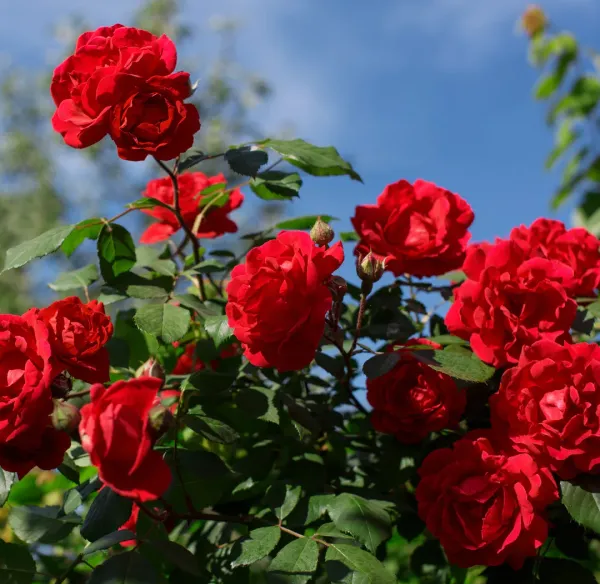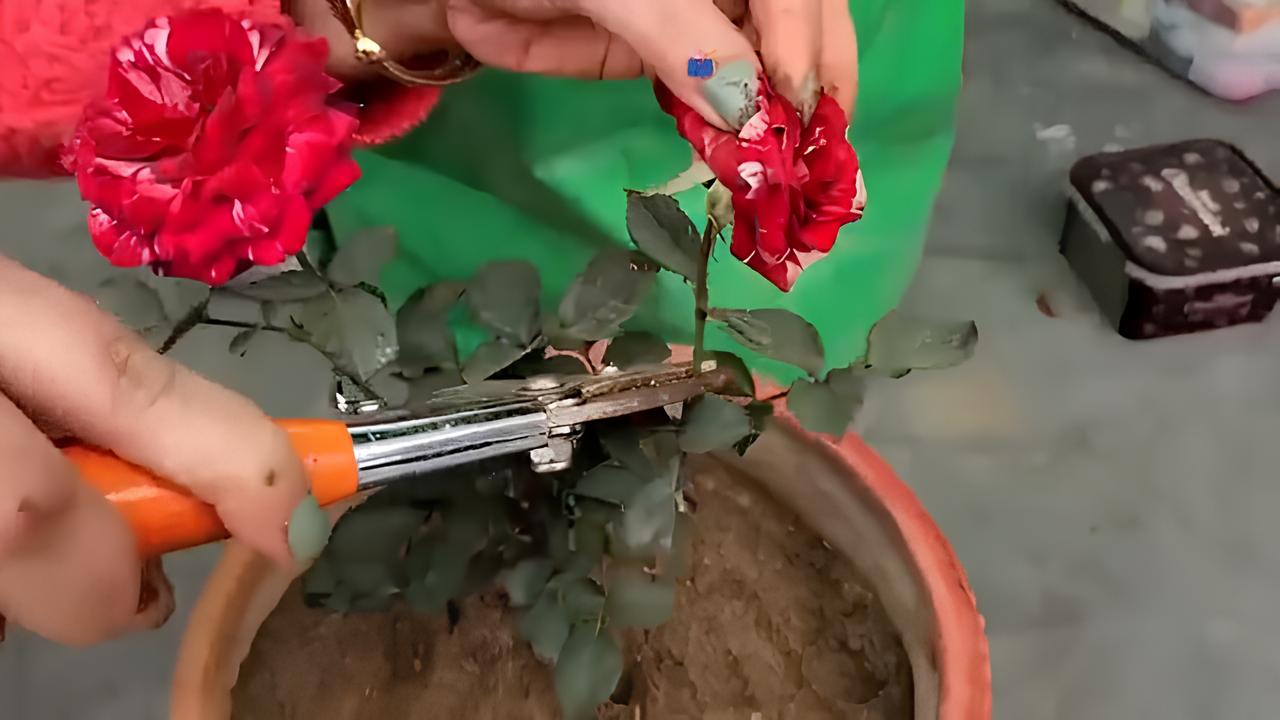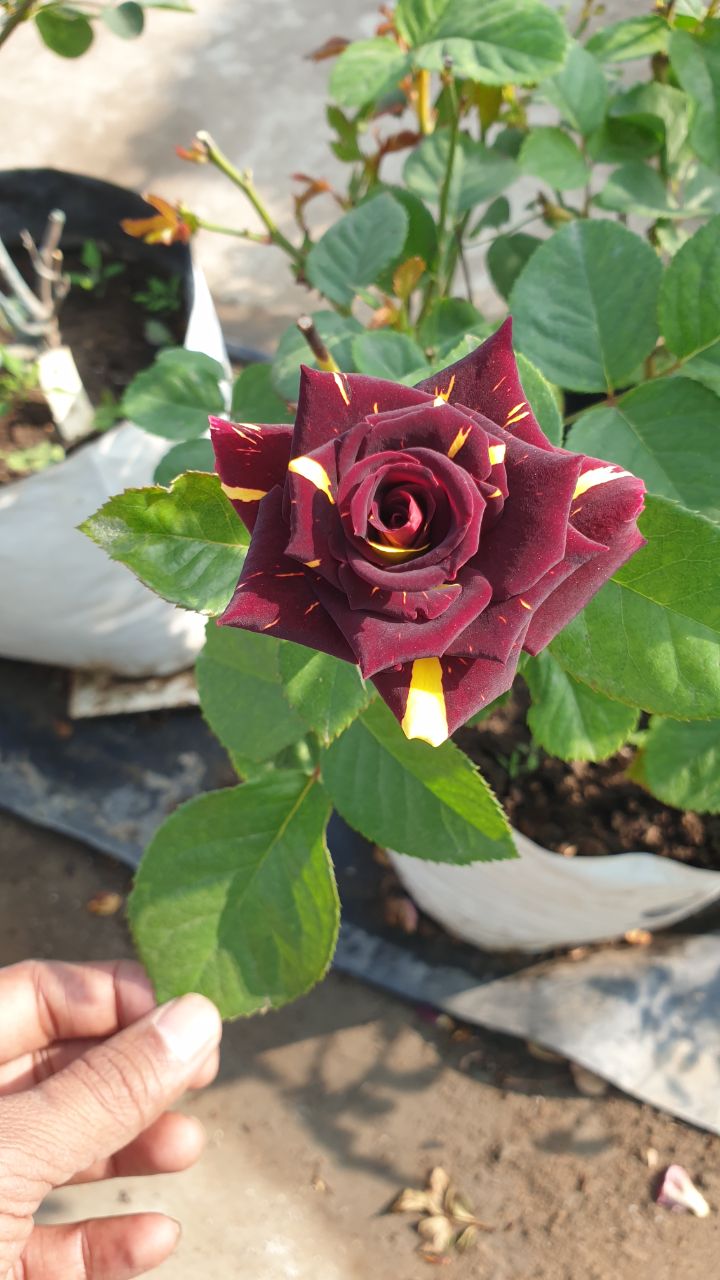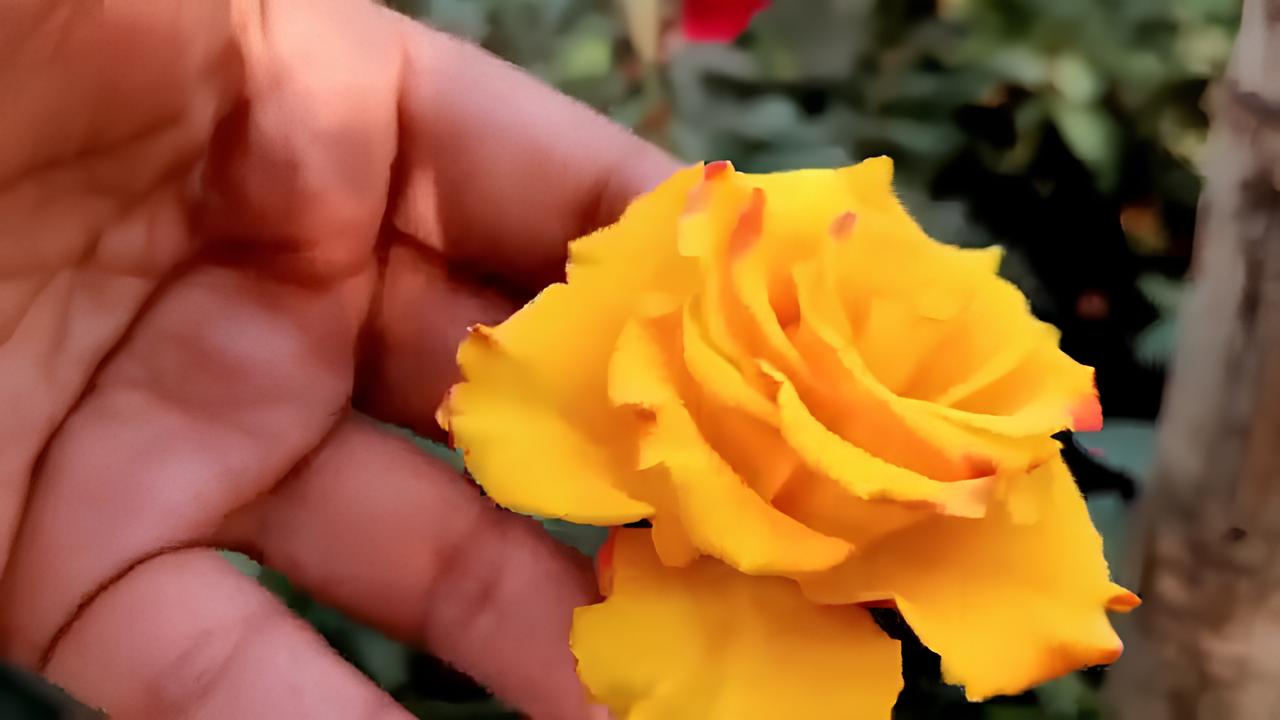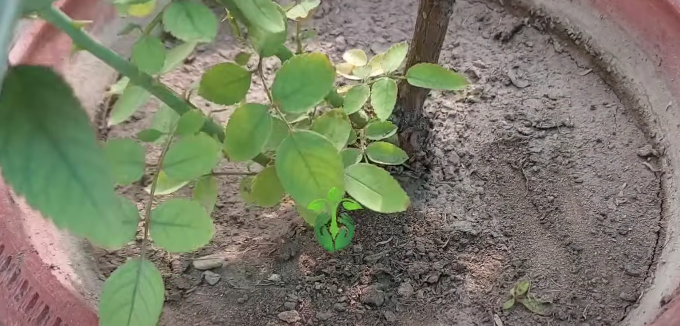Introduction of Rose Flower
The rose, often called the “Queen of Flowers,” is cherished by gardeners and flower enthusiasts
everywhere. Its classic beauty and delightful fragrance make it a favorites.
Roses are available in a variety of colors, each carrying its own unique significance.
- Red roses signify love and passion.
- White roses stand for purity and innocence.
- Yellow roses symbolize friendship and joy.
This range of colors makes roses suitable for any occasion, be it a romantic event or a friendly
get-together.
Roses are not just beautiful; They also have a lot of history and meaning. In ancient Greece and
Rome, roses were associated with love and beauty, often associated with goddesses such as
Aphrodite and Venus. Roses also speak a language of their own, known as "floriography", where
they convey emotions and messages without words. This has made them popular in stories, art, and
personal notes.
Roses also help the environment. They attract bees and butterflies, which play a crucial role in
the plants' growth. Additionally, roses have also been used in traditional medicine. Rose water,
made from rose petals, is good for the skin and is rich in rosehip fruit, vitamin C and
antioxidants.
Whether grown in the garden or enjoyed in a vase, roses continue to delight and inspire. They
represent beauty, love and strength, and their timeless appeal makes them cherished by people
everywhere.
Types of Rose Plants
Roses are one of the most diverse and versatile flowers,
with over 300 species and thousands of varieties, each offering its own unique charm. These
types can be categorized into several distinct groups, each with its own characteristics.
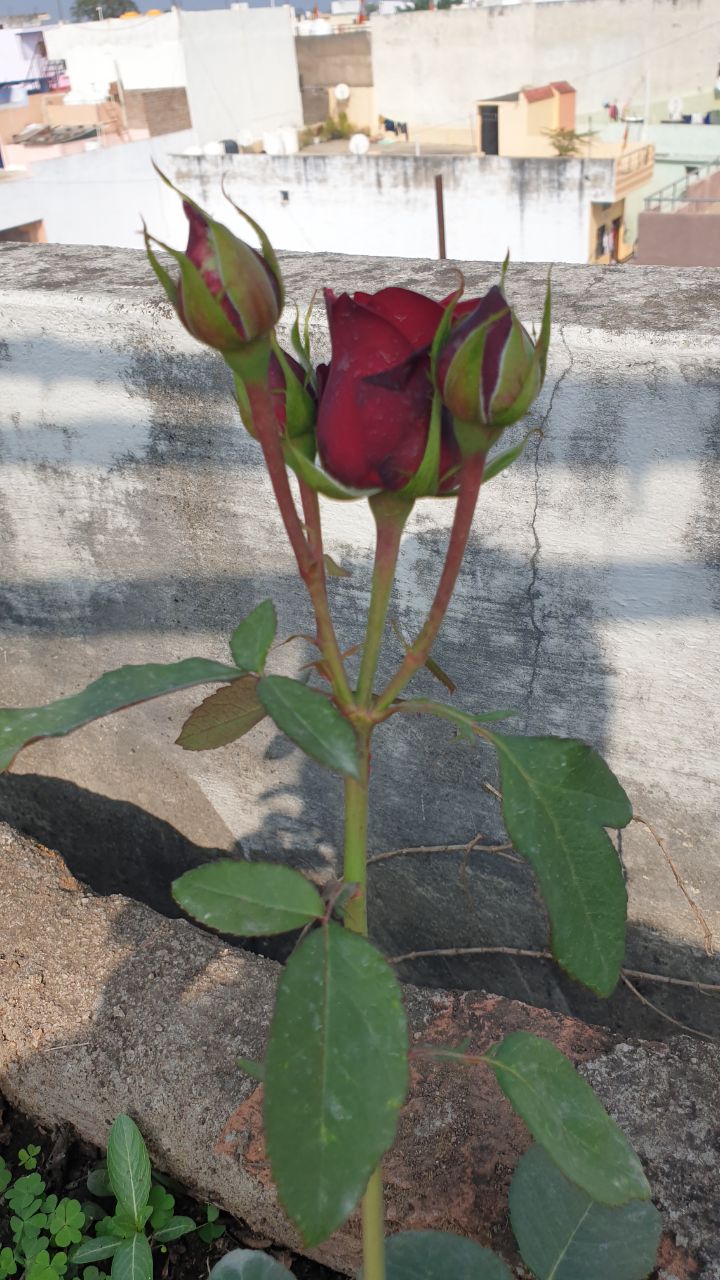
- Mongrel Tea Roses are renowned for their outstanding beauty. Hybrid tea
roses, the most popular type, produce large, single flowers on long stems, making them ideal
for cut flowers. They come in a wide range of colors and are often associated with beauty
and love.
- Floribunda Roses are valued for their clusters of flowers, creating a
vibrant display of colors. They are hardier than hybrid tea roses and are commonly used in
landscape design for large-scale plantings. These roses bloom continuously throughout the
growing season and maintain their bloom for an extended period.
- Grandiflora Roses are a blend of hybrid tea and floribunda roses. They
combine the elegance of hybrid tea roses with the cluster blooming of floribundas, producing
large, showy flowers in clusters and offering the best of both worlds.
- Climbing Roses are ideal for adding height and drama to a garden. They have
long, flexible stems that can be trained to grow along trellises, walls, or over arches.
They produce an abundance of flowers and are excellent for creating vertical interest.
- Shrub Roses are hardy, low-maintenance, and suitable for informal settings.
With a bushy growing habit, they can produce flowers throughout the growing season. These
roses are often disease-resistant and can thrive in various climates.
Rose Diseases and Pests
Roses, while beautiful, are prone to certain diseases and pests. Understanding how to identify
and address these issues is essential for keeping plants healthy. Here’s an overview of the most
common problems roses face, along with prevention and treatment tips:
-
1. Black Spot
- Description: Black spot is a fungal disease that causes black,
circular
spots on the leaves, leading to yellowing and premature leaf drop.
- Prevention: Ensure good air circulation around your plants by
spacing
them properly. Water roses at the base to avoid wetting the leaves, and remove any
fallen leaves or debris from around the plant.
- Treatment: If black spot appears, remove and destroy affected
leaves. Apply a fungicide specifically designed for black spot, following the
manufacturer’s
instructions.
-
2. Powdery Mildew
- Description: Powdery mildew is another fungal disease that appears
as a white, powdery coating on the leaves, stems, and buds. It thrives in warm, dry
conditions.
- Prevention: Water your roses early in the day to allow the leaves
to dry before evening. Prune your roses regularly to improve air circulation.
- Treatment: Remove affected parts of the plant and apply a fungicide
if necessary. Neem oil or sulfur-based sprays can also help control powdery mildew.
-
3. Aphids
- Description: Aphids are tiny, soft-bodied insects that cluster on
new growth, sucking the sap and causing leaves to curl and distort. They can also
spread
diseases.
- Prevention: Encourage beneficial insects like ladybugs, which
naturally prey on aphids. Regularly inspect your roses, especially during the
growing season.
- Treatment: Spray the aphids off with a strong jet of water, or use
insecticidal soap or neem oil to control infestations.
-
4. Japanese Beetles
- Description: Japanese beetles are metallic green insects that feed
on rose petals and leaves, skeletonizing them and causing significant damage.
- Prevention: Handpick beetles off the plants early in the morning
when they are less active. Use row covers to protect your roses from beetles.
- Treatment: If beetles are a severe problem, consider using traps or
applying a suitable insecticide. However, traps should be used with caution as they
can attract more beetles.
-
5. Rust
- Description: Rust is a fungal disease that causes orange or reddish
spots on the undersides of leaves.
- Prevention: Water roses at the base to keep foliage dry, and ensure
good air circulation by pruning regularly. Remove and destroy any infected leaves.
- Treatment: Apply a fungicide labeled for rust control, and continue
monitoring the plant for signs of the disease.
-
General Care Tips
- Regular Inspection: Check your roses regularly for any signs of
disease or pests.
- Healthy Practices: Maintain plant health by watering properly,
feeding your roses, and keeping the garden clean of debris and dead plant material.
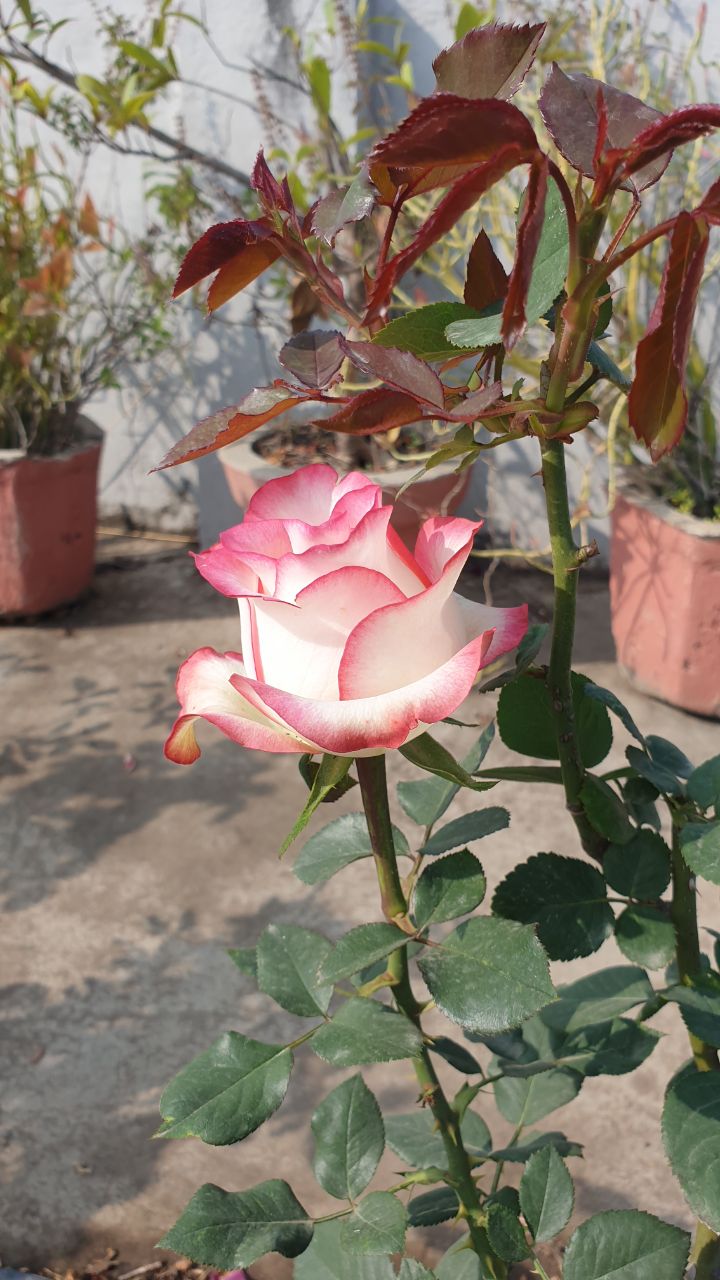
Key Points Roses Plant
Roses are more than just a symbol of beauty and love—they offer a wealth of benefits, from their
stunning aesthetic appeal to their medicinal and environmental contributions. By choosing the
right varieties, providing ideal growing conditions, and staying vigilant against common pests
and diseases, you can cultivate healthy, vibrant roses in your garden. The joy of harvesting
your own roses, whether for a bouquet, petals, or simply to admire in your yard, is a rewarding
experience that brings both beauty and a sense of accomplishment.
Whether you’re an experienced gardener or a novice, growing roses offers a rewarding and
enjoyable challenge. With a little care and attention, anyone can enjoy the timeless elegance
and multifaceted benefits of these remarkable flowers. So why not give it a try? Plant a rose
bush in your garden, and watch as it transforms your space with its grace and charm.
The Process of Making Rose Flower
Perfume
A very detailed and delicate process is followed to make rose flower perfume. This process is
completely based on extracting natural essential oils. Let us understand its steps in detail:
-
1. Flower Collection
First collect fresh rose flowers. Morning time is chosen because this is the time when
the fragrance of roses is the strongest, and their oil content is also high.
-
2. Distillation Process
Steam distillation is used to extract roses. In this process:
- Roses and water are mixed in a large container.
- This mixture is heated and steam is generated.
- The essential oil of rose petals is heated in steam, which then gets separated when
cooled.
- From this process, we get rose oil, which is the main component of perfume.
-
3. Effleurage Method (Optional)
Another traditional method is effleurage, where fresh rose petals are layered on a bed of
fat (either animal or plant-based) on a glass plate. This fat absorbs the fragrance from
the rose petals. After some time, the petals are replaced with fresh petals. This
process is repeated till the fat absorbs the pure rose fragrance. After that, the fat is
treated with alcohol so that the fragrance can be extracted.
-
4. Solvent Extraction
In some cases, solvent extraction has been used. In this process:
- Rose petals are immersed in a solvent (such as hexane).
- This creates a wax-like substance called "concrete".
- Rose absolute is created by dissolving the concrete in alcohol, a process commonly
used in high-quality perfumes.
-
5. Blending
When rose oil or rose absolute is ready for use, it is blended with other natural
essential oils or synthetic compounds to create a balanced and long-lasting fragrance.
-
6. Aging
After making the perfume, it is allowed to age for some time, so that all the ingredients
can blend together properly to create a smooth fragrance.
-
7. Packaging
When the perfume is ready, it is put into different bottles for packaging, which is ready
to be sold in the market.
Conclusion
Rose flower perfume is made after a detailed process, which involves several stages from
extracting the natural fragrance to blending it. Every stage is important to create a perfect
rose perfume that people like.
Health Benefits of Rose Leaf Tea
Rose leaf tea is not just a soothing drink; it also offers several health advantages. Here are
some key benefits:
- Rich in Antioxidants: Rose leaves are packed with antioxidants that help
protect your body from harmful free radicals. This can lower the risk of chronic diseases
and keep your cells healthy.
- Reduces Inflammation: The anti-inflammatory properties in rose leaves can
help ease swelling and pain in the body. This is especially useful for those dealing with
arthritis or other inflammatory conditions.
- Supports Digestive Health: Drinking rose leaf tea may help improve
digestion. It can soothe an upset stomach, reduce bloating, and promote overall gut health.
- Calms the Mind: The pleasant aroma of rose leaf tea can help reduce stress
and anxiety. Enjoying a warm cup can create a relaxing moment in your day.
- Boosts Immunity: Packed with vitamin C, rose leaf tea can help boost your
immune system. Regularly drinking this tea may help your body fight off colds and
infections.
- Enhances Skin Health: The antioxidants in rose leaves can promote healthier
skin. Drinking this tea may help improve your complexion and reduce signs of aging.
- Alleviates Menstrual Discomfort: For women, rose leaf tea may help ease
menstrual cramps and discomfort, providing a natural way to feel better during that time of
the month.
- Supports Respiratory Health: This tea can soothe coughs and throat
irritation. Its natural properties may help clear mucus and ease breathing.
How to Make Rose Leaf Tea
- Gather Fresh or Dried Leaves: Rinse them to clean.
- Boil Water: Pour hot water over the leaves.
- Steep: Let it sit for 5-10 minutes.
- Strain and Enjoy: Add sugar or lemon if you like!
Final Thoughts
Incorporating rose leaf tea into your daily routine can provide numerous health benefits while
offering a delightful taste. Always consult with a healthcare professional before trying new
herbal teas, especially if you have health concerns.
